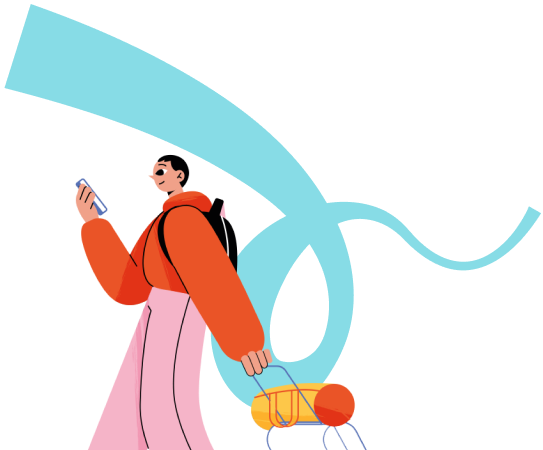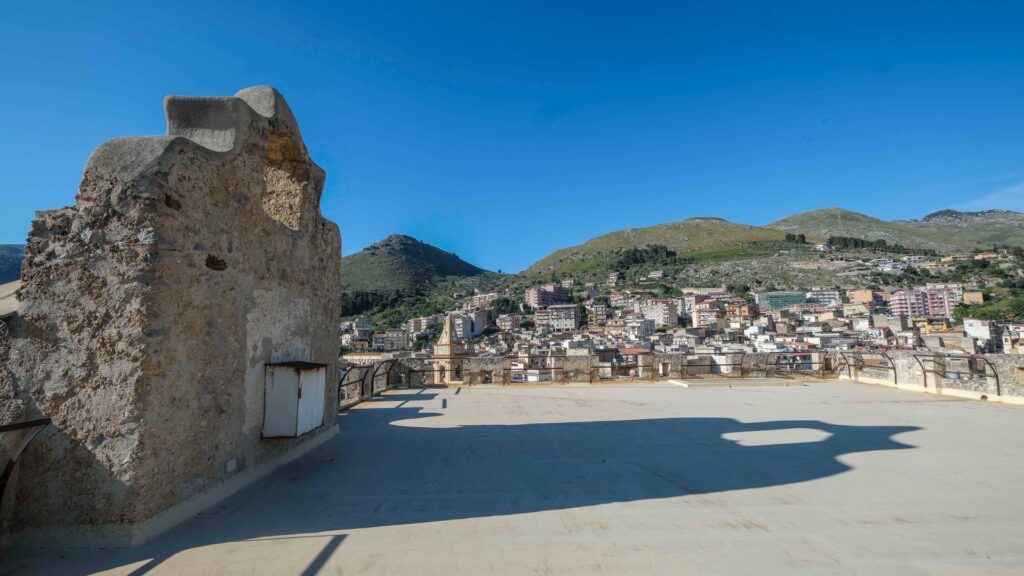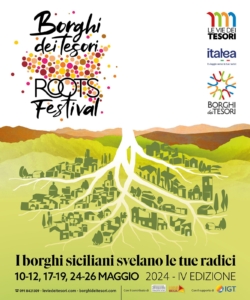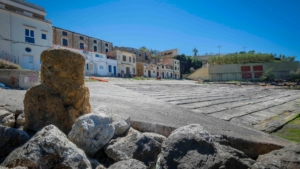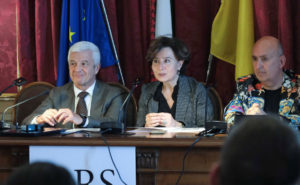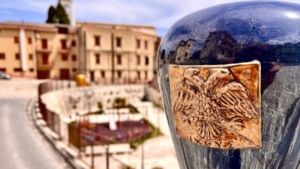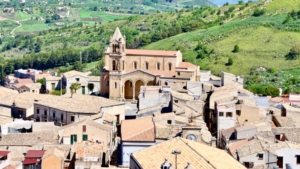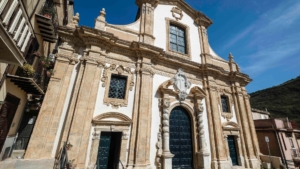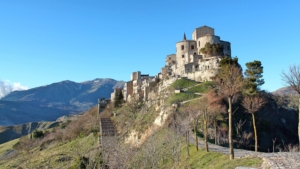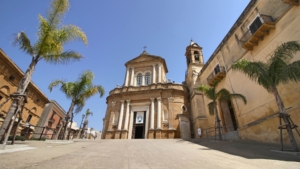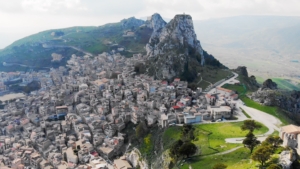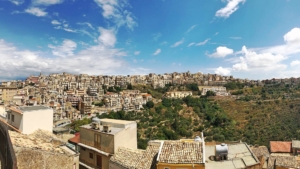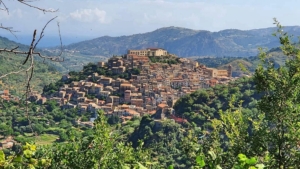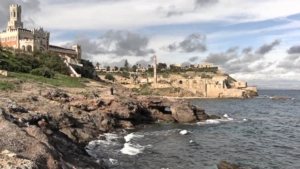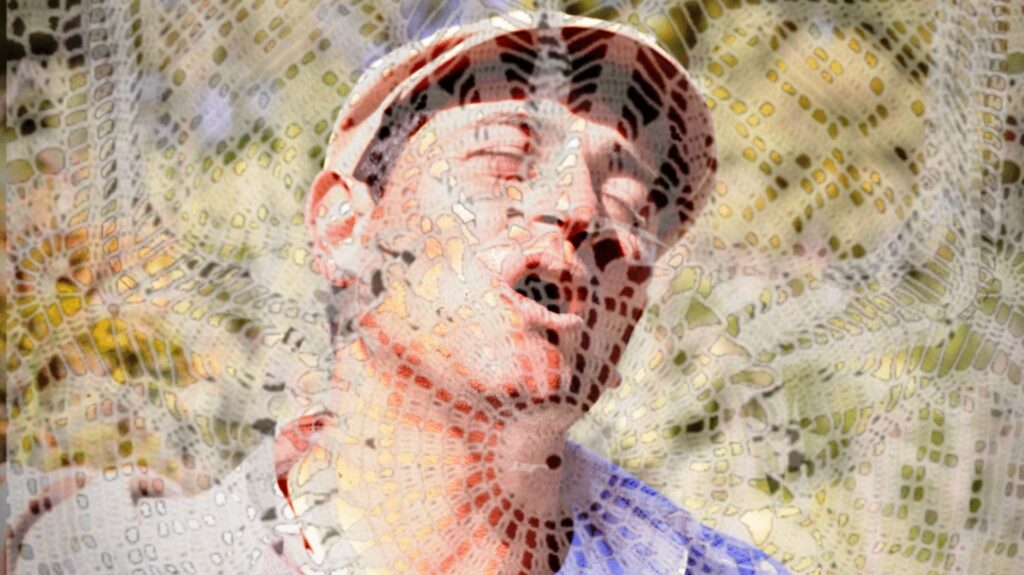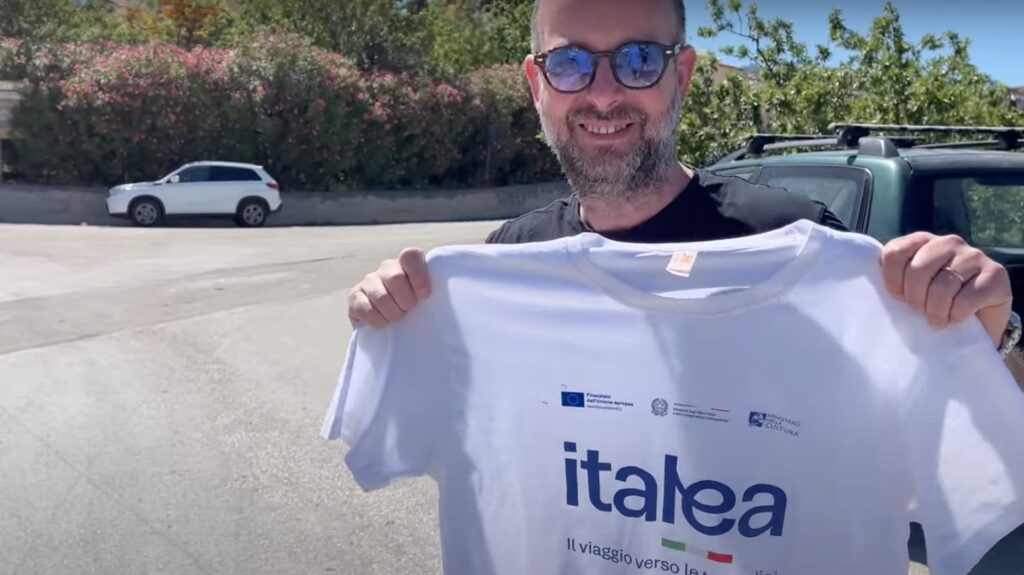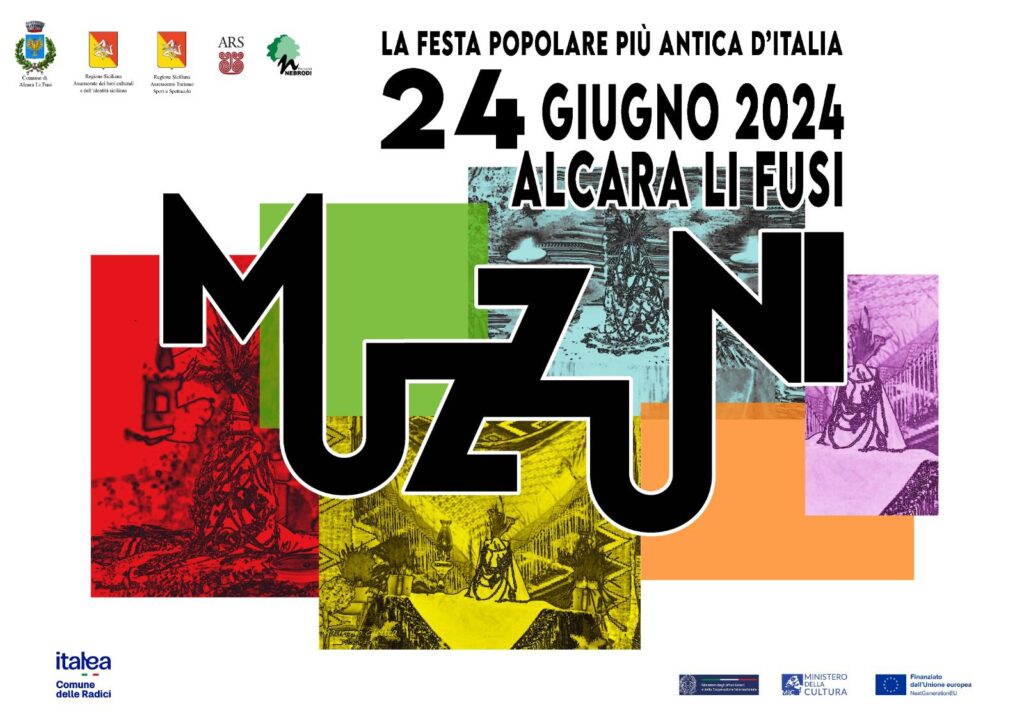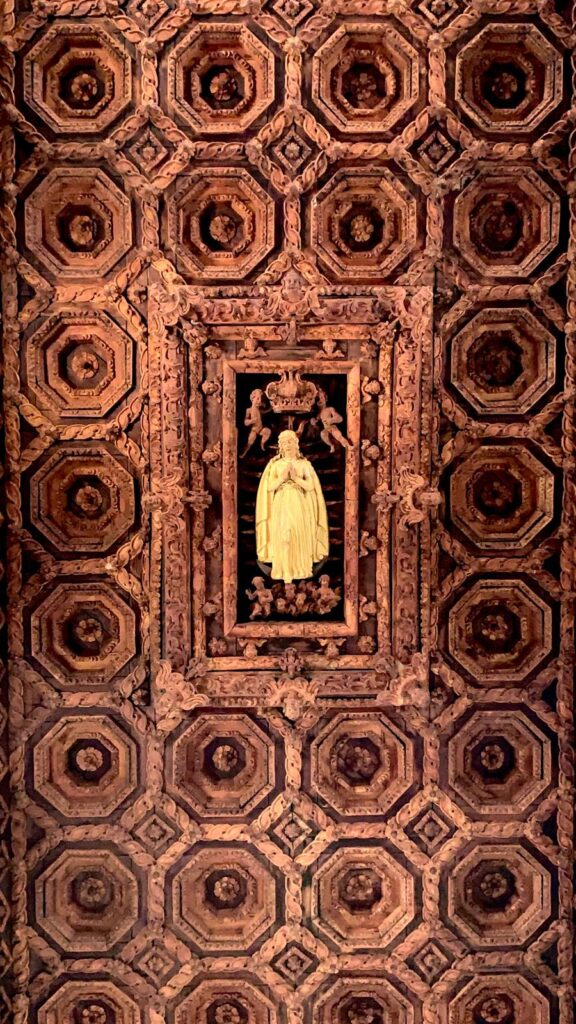From 10 May, three weekends to discover places, traditions, routes, recipes, artisans from one end of Sicily to the other. It is the fourth edition of the Borghi dei Tesori Roots Festival, this year brought forward in spring and linked to the Year of Roots Tourism, a project of the Ministry of Foreign Affairs through its territorial antenna, Italea Sicilia, of which Sasà Salvaggio is an ambassador. As a gift, the seeds of the island’s flowers chosen by the Botanical Garden of Palermo. About 500 sites, walks and experiences and many young people involved to tell the story of a completely unknown island that goes from the Madonie to the Nebrodi, from the Sicani to the Iblei.
You will be able to listen to A concert in a hermitage at sunset or visit a marble quarry and descend with speleologists into a cave full of stalagmites; learn how to cook a traditional dessert with the women of the village, do yoga with the cows; Get lost in Stucco lace, delicate bas-reliefs, Arab castles and fortified towers; go by lakes, paths, follow a former railway or reach a mysterious Sican city on the summit; count how many villages have an Arab Rabat and how many have a Frederick castle; get on a boat and get lost between two seas, walking on the Via Francigena, understand that the land taken from the mafia can attract young people to the island. And above all, discover the places and traditions that bear witness to emigration to Sicily: museums, convents, artisans, places of memory that build a bridge with the 8 million Sicilian-descendants scattered around the world.
And since food is one of the strongest and most precious memories, You will be able to taste traditional foods everywhere, discovering that cucciddato is a Christmas cake from Prizzi, that ‘mbriulata lasted for weeks in the saddlebags of the peasants of Sutera, that the ancient pasta is not salty but is an exquisite dessert of Montelepre, that the ladies had dedicated sweet crowns, that the sfincione cooked together is better. And everywhere you can follow gastronomic workshops, take part in alleys, retrace your roots.
Because Sicily is discovered by putting all five senses into play, none excluded. This year the Borghi dei Tesori festival Not only does it anticipate its fourth edition to spring, a season in which each of these 46 small municipalities it is a riot of nature, flowers, festivals, festivals; but it is strongly linked to theYear of Roots Tourism, a project of the Ministry of Foreign Affairs through its territorial antenna, Italea Sicilia, led by Laura Anello, president of the Le Vie dei Tesori Foundation.
The name Italea recalls the botanical term cutting, which indicates the part of a plant that, detached from its mother, generates a new plant. The emigrants from Sicily are many cuttings scattered around the world, and the island is the mother plant. So what better gadget of the project than biodegradable sheets of paper that contain seeds chosen with the advice of the Botanical Garden, the magnificent scientific garden of the University of Palermo, a treasure trove of biodiversity that will be 230 years old next year and which is a partner in the project? All you have to do is put the paper on the ground, water, and the essences of the villages will bloom.
Borghi dei Tesori Roots Festival is therefore part of this year’s Italea Sicilia project, which chooses as its testimonial one of the most beloved faces among the communities of Italians abroad: Sasà Salvaggio with his sympathy and dispassionate “insularity”, he will virtually open the arms of this welcoming and authentic Sicily, relaunching the experiences of the Festival on his digital channels followed all over the world by thousands of Sicilian-descendants.
During the three weekends of the Borghi dei Tesori Roots Festival you can do a lot, a lot: From 10 to 26 May, Fridays dedicated mainly to schools, Saturdays and Sundays for everyone. The wait is long, as soon as the program was published on social media it received thousands of shares and requests for information: 46 villages scattered like tiles of a single Sicilian mosaic, about 500 sites, walks and experiences and many young people involved to tell the story of a completely unknown Sicily that goes from the Madonie to the Nebrodi, from the Sicani to the Iblei, from one end of the island to the other.
Last year, for its third edition, the festival welcomed over 12 thousand participants. And almost all of them visited several municipalities, with the best known and most tried and tested acting as a catalyst for the others. Borghi dei Tesori Roots Fest is promoted by the Le Vie dei Tesori Foundation in collaboration with all the Municipalities and the Regional School Office, and is supported by Igt and the Sicily Foundation.
The villages of this 2024 edition – coordinated by Michele Ruvolo with Giovanna Cirino, Marco Coico, Alessandra Fabretti, Alida Fragale – represent all nine Sicilian provinces: they are Alcara Li Fusi, Balestrate, Baucina, Bisacquino, Bompietro, Buccheri, Burgio, Calascibetta, Calatafimi Segesta, Caltabellotta, Cammarata, Camporeale, Centuripe, Cassaro, Chiusa Sclafani, Ciminna, Collesano, Contessa Entellina, Custonaci, Delia, Frazzanò, Gangi, Geraci Siculo, Giarratana, Giuliana, Isnello, Licodia Eubea, Mirto, Montelepre, Monterosso Almo, Montevago, Petralia Soprana, Petralia Sottana, Pettineo, Piedimonte Etneo, Pollina, Portopalo di Capo Passero, Prizzi, Sambuca di Sicilia, San Piero Patti, Santo Stefano Quisquina, Siculiana, Sutera, Trappeto, Valledolmo, Vallelunga Pratameno.
Three weekends according to the tried and tested formula of the Vie dei Tesori: the villages will open and animate the “family treasures”. And since taste is also a weapon of knowledge, practically every municipality has fished in its most authentic culinary traditions to sew experiences, show cooking, tastings, visits to vineyards, dairies, olive groves, even pastry shops and butchers.
“That of the villages – says Laura Anello, president of the Vie dei Tesori – is our most challenging project, that of making the heritage of these small municipalities the lever to reverse the course of depopulation, enhancing extraordinary places and itineraries with the contribution of young people. Starting from this experience, we successfully applied to represent the Italea project in Sicily. We like to think that the descendants of emigrants, who represent an extraordinary tourist and economic potential for their places of origin, can help today’s young people to no longer emigrate out of necessity.”
“Our Botanical Garden, which is a precious treasure trove of the plant world, with plants from every corner of the planet,” says Rector Massimo Midiri, flanked by the president of the University Museum System, Michelangelo Gruttadauria, “will now travel the world to make its extraordinary heritage of biodiversity known. The University of Palermo thus adheres to the Italea Sicilia project, the territorial antenna of the Ministry of Foreign Affairs, to bring the flowers of the Sicilian fields to the descendants of emigrants scattered around the world, hoping that they will soon come to smell the scent in their land of origin, discovering a land that has changed since the times of their ancestors, a land capable of development and innovation from which we hope they will emigrate less and less”.
“The Fondazione Sicilia adheres with conviction to an initiative like this,” comments President Raffaele Bonsignore , “which strengthens the ties between territories and cultures through roots and the re-appropriation of places. The Fondazione Sicilia has always put the promotion of the island in all its forms first, including with interventions for the revaluation and regeneration of villages at risk of depopulation. It is essential that these small towns, unique in the world, also become a job opportunity for the many young people who will no longer have to leave their homeland, hopefully soon. In this sense, roots tourism can and must open up new paths.”
In the villages, the involvement of young people is part of the process of social regeneration and identity re-appropriation that Le Vie dei Tesori conducts together with the Municipalities and the Regional School Office to rediscover an extraordinary hidden heritage, encourage the birth of new tourist itineraries, and counteract depopulation processes. “This virtuous project,” says Enrica Ronchini, head of external relations at IGT , “provides, in addition to the mapping and digitization of cultural sites, also the training of young people from local communities who will be prepared to get to know and tell their own land, also through digital tools. Training of young people, enhancement of the Italian historical-artistic heritage and technological innovation are the cornerstones of our commitment to the community that are fully realized in the Borghi dei Tesori Roots Fest, allowing us to share the values that guide us and bind us to the roots of the country”.
Le Vie dei Tesori has made available to the festivals of the Villages the efficiency of an already consolidated network and the organizational experience: Borghi dei Tesori Roots Fest is also A smart and digital exhibition, with a single coupon valid for visits to all places – an average of five sites for each village, not counting experiences and walks that require a dedicated coupon – which will open their doors.
THE VILLAGES OF THE FESTIVAL
So here are the villages, and each one will be an experience: there are also ten new entries: Cammarata, Cassaro, Ciminna, Delia, Giarratana, Montelepre, Pettineo, Siculiana, Trappeto and Valledolmo. The list is extensive, several more adhesions than the last edition: starting with theAgrigento with Burgio, Caltabellotta, Cammarata, Montevago, Sambuca di Sicilia, Santo Stefano Quisquina, Siculiana; in the Nisseno, Delia, Sutera, Vallelunga Pratameno, and in the Catanese, Licodia Eubea and Piedimonte Etneo; InEnnese, you will go up to Calascibetta and Centuripe. On the Nebrodi, or in any case in the Messinese area, the little ones, Alcara Li Fusi, Frazzanò, Mirto, Pettineo, San Piero Patti. A large group of Palermo: Balestrate, Baucina, Bisacquino, Bompietro, Camporeale, Contessa Entellina, Chiusa Sclafani, Ciminna, Collesano, Gangi, Geraci Siculo, Giuliana, Isnello, Montelepre, Petralia Soprana and Petralia Sottana, Pollina, Prizzi, Valledolmo and Trappeto. Ragusano closes with Giarratana and Monterosso Almo; Syracuse, with Buccheri, Cassaro and Portopalo di Capo Passero; and Trapani with Calatafimi, Segesta and Custonaci.
Visiting everything will be impossible – but you can always try – even if it is better that there is always something to see, to return, to deepen, perhaps discover the nearby villages, the hidden woods, the spring or the craftsman. You can follow these itineraries, only suggestions, by proximity or assonance of the villages you meet along the way.
THE ITINERARIES
The jewels of the Madonie (11 villages). They are perched on the mountains like many small nativity scenes, one more beautiful than the other, surrounded by greenery, masters of habits and slow rhythms, but also true jewels of art. Let’s start with Baucina who celebrates Santa Fortunata and opens the sanctuary, but will also lead among the women of the village to prepare with them a very special (and delicious) sfincione; then Ciminna where you can “breathe” The Leopard (in 300 photos of the set) and it still seems to listen to the Te Deum in the majestic church of Santa Maria Maddalena where they will show you the stucco splendor of Li Volsi. And in a special organic farm you will discover the “ornamental” animals of the world: suede goats, mini Dutch ponies, ermine turkeys and even alpacas.
Built around a … elm (or at least this is the legend that binds it to the Gravina Cruyllas lords) Valledolmo it is at its debut, it opens the Stagnone, a real, huge, cathedral of water, but above all it will take you among the young people who have taken over the family businesses and produce oil, wine and Siccagno tomatoes that do not need water to grow. Among the experiences, those of the young people of Verbumcaudo who work the land that Judge Falcone took from the mafia. Another welcome return is Bompietro, where you will meet a lawyer who has decided to change his life, relaunching an old dairy. The two Petralie answer “present”: in Soprana you will caress the goats but above all you will discover the amazing SottoSale sculpture museum in the Italkali mine. In Sottana, on the other hand, we will visit the Catarratti power plant, we will participate in very special “yoga” sessions. In Geraci Siculo you will get lost among churches and palaces, arriving at the spectacular Salto dei Ventimiglia. Gangi returns, the “mountain dressed in houses”, an intact medieval village where nature and man live in perfect symbiosis at an altitude of a thousand meters: from Piazza San Paolo the plumes of Etna emerge. A little further down, in the lower Madonie, there is Isnello, considered one of the places to admire the best starry sky in the world. Don’t miss Pollina, among crafts of the past, lost flavors and art treasures. Collesano leads to the discovery of its castle, which has just been reopened, of Father Umile’s crucifixes, and offers an endless series of regenerative experiences, including wellness and ceramics workshops, and an unprecedented yoga path … with cows.
Western Sicily (8 villages). Let’s move on to Sambuca di Sicilia where you go through courtyards, vineyards and “purrere”, fleshy flavors such as the Minne of virgins of the village: but you will be able to admire the famous grave goods of the Tomb of the Queen of Monte Adranone that the Salinas Museum has returned to the village; Not far away, Montevago where the memory of the 1968 earthquake is still alive, but it has been transformed into an open-air museum of murals with a strong ethical meaning, which tightens around the ancient Matrix. Calatafimi-Segesta this time gathers around the beautiful hermitage of Maria Santissima di Giubino to listen to a concert at sunset. Not far away, there are Custonaci on the one hand – the visits to the marble quarries and the Mangiapane cave with the museum of peasant environments are back, but this time you will wear helmets to descend with the speleologists for 90 meters to find the fascinating world of stalactites and stalagmites of the cave of the “club” – and Crossbows towards Palermo: here you will discover the beauty of a mango flower and you will mend the routes followed by the “English” Marsala of the Woodhouses, observing the village from the sea.
A few steps away, the tiny Trappeto that brings its two souls as a dowry: the ancient community of fishermen of the old scaro where they will welcome you with dishes of roasted sardines; and Danilo Dolci’s ethical and social battles, still tangible in his Borgo di Dio. Montelepre , the ancient Arab Muncilebbru, which grew up in the 1400s around its fortified tower, still perfectly standing; it is a land of revolutionaries and mysteries and has a wonderful dessert, the Pasta all’antica which will be one of the discoveries during the festival. Camporeale , on the other hand, repeats last year and replicates its kingdom of flavors: tastings, award-winning mortadella, niche products, oil, ancient focaccia, wines, juices perhaps explained by a young Kenyan gastronome who has chosen Sicily.
There on the Sicani mountains (8 villages). Between the provinces of Palermo and Agrigento, ten villages are ready to put themselves in the shop window. Starting from Kuntisa (Contessa Entellina in the Arbereshe language), where walks among the rows of vines up to the Rocca di Entella and tours through the alleys of the village await you; at the Frederick Castle of Giuliana , don’t miss the aperitif at sunset among nobles and courtesans. Those who visit Chiusa Sclafani will be moved by the story of the girls abandoned by their families who had to emigrate, but you will also discover that in the Abbey Monastery where the Benedictine nuns distilled perfumes; and that Tornatore is at home here. In Prizzi (the ancient and mysterious Hyppana on the Mountain of Horses) the doors of the municipal archive will open with the documents of the citizens of the nineteenth century, to many emigrants.
Bisacquino, on the other hand, is the land of director Frank Capra, but also the seat of the oldest artisan watchmaker’s workshop that has been transformed into a museum of time. Crossing the provincial border, here is in the territory of Agrigento: Burgio, where you will discover how a bell is melted, but also that the crypt of the Capuchins preserves some of the best preserved mummies on the island. In Caltabellotta you can caress an ancient baptismal font with the Templar cross, admire the impalpable works of the embroiderers and place the works of the sculptor Salvatore Rizzuti side by side with ancient finds. Reaching the coast and arriving in Siculiana, you will find the city of lovers and sunsets, but they will show you the first documents that will soon be exhibited at the new museum dedicated to Ayrton Senna, who was originally from this village.
The ancient heart of the island (7 villages). Calascibetta is a paradise for archaeology enthusiasts, among necropolises with caves, Byzantine villages, and medieval prisons you won’t know what to choose, but maybe you will like to taste a breath. It’s a shame you don’t have a drone with you: just looking at it from above you would realize that Centuripe has the very particular shape of a Vitruvian man or a starfish. Here they will explain how an “archaeologist artist” perfectly reproduces the red-figure vases of the ancient Greeks.
Going towards Palermo, there is Vallelunga Pratameno where the faithful reconstruction of a monarchist classroom inside what were once the elementary schools of the village returns this year. And if in Cammarata you will go in search of treasures on the traces of the Norman Lucia dominance, and you will climb to Monte Cammarata, the highest peak of the Sicani mountains; To get lost among snowfields and ancient marks, the typical stone shelters for sheep. At Santo Stefano Quisquina there is only one unmissable visit to the Sanctuary of Santa Rosalia (but they will also explain to you at what exact moment the ricotta “curds”); A trek will lead to the inviolable Rocca Sopra SuteraOn the other hand, it is easier to reach the ancient Rabato between dammusi and plaster “ghittene” where they will teach you that the ‘Mbriulata could remain for days in the peasants’ saddlebags, while lu Virciddratu smelled of cinnamon at Christmas. The novelty, Delia: you will discover the places of the Jewish community and one of the rare Arab castles in Sicily, they will teach how to bake Cuddrireddri sweets. But above all, you will let yourself be guided by the scent to taste the best bread in the world, at Borgo Santa Rita.
In the green of the Nebrodi (6 villages). The villages to be discovered are almost all perched on the mountains. What Frazzanò where there is the only Basilian monastery in Sicily with the Kîmesis, a rare fresco that takes up the style of Byzantine art; but you also go for high-altitude strawberries; Alcara Li Fusi there is San Pantaleone with its seventeenth-century organ, one of the oldest in Sicily; and the Museum of Sacred Art, with a wax Christ with an open side and visible internal organs. And don’t forget the griffon vultures (which you will see up close). In the shops and houses of San Piero Patti a very particular Gallo-Italic dialect is still spoken, but the workshops of the Carmelite convent where the ancient art of weaving is handed down are worth a visit.
Finally, Mirto, another village where tastings and unprecedented gastronomic visits will be the masters, rediscovering an innovative start-up that brings Sicilian food to the world or watching the piglets running in the hazelnut groves. The new entry, Pettineo celebrates the sale of the altars of Sant’Oliva, which is 400 years old, just like the Palermo Feast, and exhibits the shreds of the “Kilometer of canvas” of the artists that the patron Antonio Presti donated to the citizens. Solitary on Mount Etna, here is Piedimonte Etneo with its neoclassical palaces, its hamlets of Vena and Presa, but above all the unexpected opportunity to climb the bell tower of the Mother Church and visit the crypt and cloister of the Capuchin convent.
At the most extreme point of the Iblei mountains (6 villages). We straddle the provinces of Syracuse and Ragusa: in Portopalo di Capo Passero we will visit (by boat) the famous island where the two seas meet, which hides a sixteenth-century Spanish fortress; But you will also discover the largest marine telescope in the world. It is then enough to go up inland to reach Licodia Eubea, guarded by the ruins of the Santapau Castle, the lords of the village who can be found in every alley; in Buccheri they will tell you the legend of the two young lovers who defeated the devil. Here we are with the new entries, marked by the earthquake of 1693: the only Museum of Iblean emigration was born in Giarratana with a focus on the tragedy of Marcinelle. The old quartier u’cuozzu has become an open-air museum of the crafts and dishes of the past, on the song of carefully preserved Ancient Harmonies. But take time to sit next to Rosanna Garofalo for a lesson in the Hyblaean “parade”.
Finally, the little one, Cassaro, who cares so much about her memory that she dedicates a museum to her, with a room dedicated to the curious Banda di Cassaro: the former railway has become a cycle path that runs along the Anapo, in an intact landscape of moving beauty. And it also turns out that Monterosso Almo is a land of sets: Tornatore, Sciarra, Enzo Monteleone, Negrin filmed here. But the real surprise is Palazzo Cocuzza where school children will connect with families who emigrated to Paraguay to collect anecdotes and memories, to the notes of the “committed storyteller” Peppino Castello.

